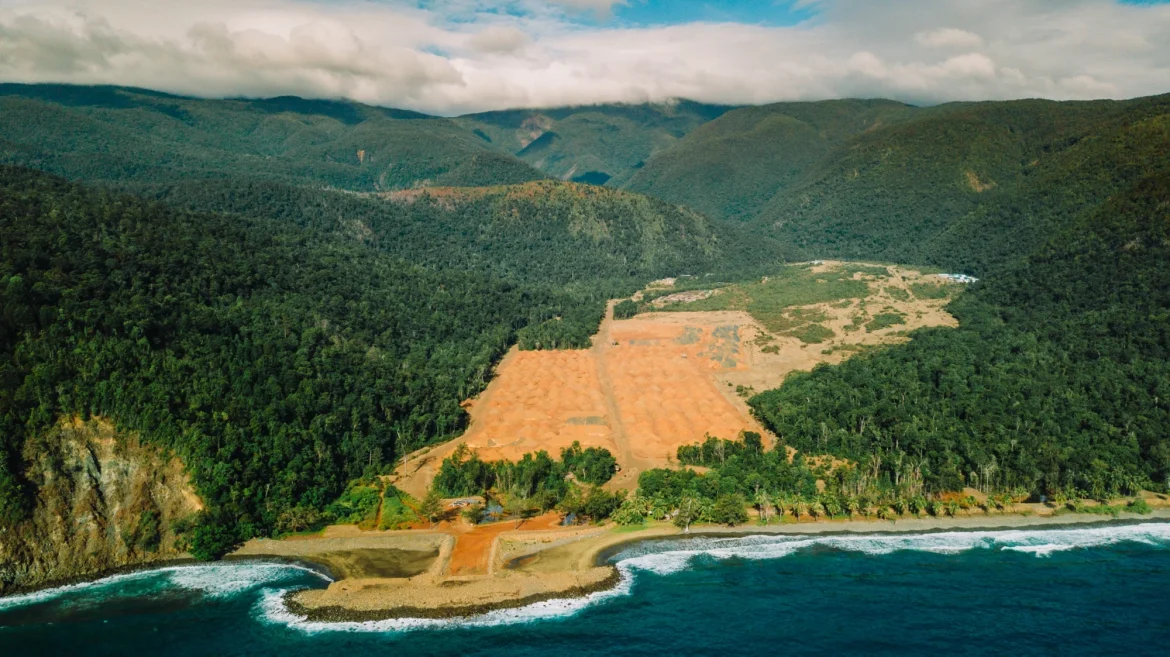PUJADA Nickel Open-Pit Mining Project poses extensive environmental and social threats regardless of assertions that the site falls outside the technical boundaries of Mt. Hamiguitan and Pujada Bay, an environmental group reiterated on Wednesday.
Interfacing Development Interventions for Sustainability (IDIS), Inc., maintained they are against the Pujada Nickel Open-Pit Mining Project as the continued operations threaten fragile ecosystems.
“The proximity of this mining activity, merely 7-8 kilometers from Pujada Island and Mt. Hamiguitan’s peak underscores the ecological danger it poses to both terrestrial and marine biodiversity,” IDIS in a press statement on Wednesday.
IDIS maintained that the project has a destructive impact on watersheds, coastal ecosystems, and vulnerable flagship species like the Philippine Eagle and Dugong (Dugong dugon) inhabiting the Mt. Hamiguitan Wildlife Range and Pujada Bay.
Apart from that, the culture and the indigenous rights of the Mandaya tribe is at stake, which cannot be compensated by tax revenues or promises of development.
“Despite being promoted as a driver of economic growth, this mining project prioritizes short-term profit for foreign extractors over long-term sustainability and the well-being of local communities,” it said.
The group called on the Department of Environment and Natural Resources (DENR) XI and its line agencies—Environmental Management Bureau (EMB) XI and Mines and Geosciences Bureau (MGB) XI, the Protected Areas Management and Biodiversity Conservation Section (PAMBCS) XI, the City Government of Mati, the Municipality of Governor Generoso, to act decisively in the matter at hand.The group proposed to cease and revoke the Mining Production Sharing Agreement (MPSA) granted to Hallmark Mining Corporation and Austral-Asia Link Mining Corporation; declare the surrounding areas of Mt. Hamiguitan and Pujada Bay as buffers, greenbelt, and transitional zones, particularly Environmental Critical Areas or Critical Habitats, as stated in the Philippine Wildlife Act.
They also wanted the Protected Area Management Boards (PAMB) of Mt. Hamiguitan and Pujada Bay to adopt unified, science-based protective actions and to review and expand the delineation of their protected areas, including designating buffer zones and critical habitats.
Considering the indigenous communities living in the immediate vicinity, IDIS said, the tribes should be involved in consultation, planning, and conservation efforts.The group also called on the people of Davao Oriental to defend the environment, and participate in public discourse actively, hold the local government leaders accountable, and demand the immediate closure of the mining operations.
“This is not a fight we can win alone. Protecting our remaining ecological frontiers requires the collective will of communities, leaders, and institutions,” it said.
Citing 1995 Mining Act, IDIS stressed that mining is “explicitly prohibited in areas such as watersheds with old-growth forests, sites near critical infrastructure like dams and reservoirs, proclaimed forest reserves, national parks, and areas classified as environmentally critical or sensitive.”
The statement came after Davao del Norte Board Member Al David Uy, whose sentiments were posted on Facebook last week exposing tremendous impacts of the said mining operations.
“These are the pictures near Mt. Hamiguitan which was recently declared as a UNESCO World Heritage Site. A habitat of the Endangered Philippine Eagle, ECOTENEO Beke Nemen….. WRIT OF KALIKASAN MY ASSSS!!!!,” Uy penned.
The group expressed they are willing to work with Uy in promoting sustainable environmental management and responsible urban development.
“We believe that meaningful collaboration and inclusive dialogue are essential to achieving long-term solutions that protect vital ecosystems across the entire Metropolitan Davao region,” the group said.
The Pujada Nickel Project is one of the 23 priority mining projects that are part of the Philippine government’s 2004 Minerals Action Plan, and has been declared one of the five mining projects aimed to contribute to the mining sector in boosting Davao Oriental economy with a potential capital investment of P540 billion.
It is located at the Northeastern section of the Pujada Peninsula and straddles the Barangays of Macambol and Cabuaya in the City of Mati, Davao Oriental.
Hallmark Mining Corporation, which currently holds control of Pujada, acknowledged they are within the ancestral domain of the Mandaya Indigenous People but maintained the company secured their Free and Prior Informed Consent as stipulated in the RA 8371 or the Indigenous Peoples Right Act.
Hallmark added they have relinquished 7,200 hectares to adequately expand the Hamiguitan World Heritage Site.
In a story published by Manila Bulletin in 2023, Hallmark Mining Corp. community relations officer Dr. Arvin Carlom said the Pujada extracts minerals in patches with each patch averaging a clearing of about 14 hectares.Carlom added the Australia-Asia Link Mining Corp. (AALMC) is currently allowed to disturb a maximum of 60 hectares as set by the government, hence they cannot touch outside 60 hectares unless the initial 60 is rehabilitated.
In 2022, the Mines and Geosciences Bureau released a statement that the Pujada Nickel Project is employing a strip or contour mining method.
Photo courtesy of Hallmark Mining Corp



